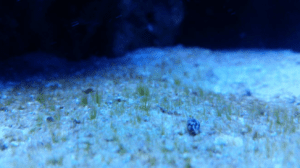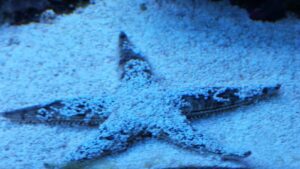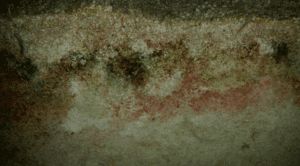Maturation time refers to the duration required for a DSB to become fully established and for the bacteria within it to mature. This process involves the colonization of the sand by various types of bacteria, each playing a specific role in the filtration process.

During the initial weeks, the DSB may undergo an unstable phase as the bacteria begin to colonize the sand. This can lead to fluctuations in water chemistry, including spikes in ammonia and nitrite levels. Consequently, it is essential to closely monitor these levels during this period and manually and delicately move the first cm of the DSB.I personally find it counterproductive to include starfish or other benthic predators in the first few months.Furthermore, during the maturation, I feed the dsb with a pinch of granulate every other day.

As the bacteria continue to colonize the sand, they form a complex ecosystem comprising several layers of bacteria. Each layer has a specific role to play in the filtration process.
The layers of a DSB are made up of different types of bacteria that work together to break down waste products and other contaminants in the water. Here is an overview of the different layers and their functions:
1. Oxygenated Zone :
The top layer, known as the surface layer or oxygenated zone, is the first 1-2cm of the sand bed and is home to aerobic bacteria that require oxygen to survive. These bacteria break down organic matter and convert it into nitrogen compounds. Additionally, this layer helps to prevent anaerobic conditions from developing in the sand bed.
2. Anoxic Zone :
The intermediate layer, or nitrate reduction zone, is situated below the surface layer and is approximately 2-5cm deep. The bacteria in this layer are facultative anaerobes, which means they can survive in both aerobic and anaerobic conditions. The bacteria in this layer help to convert nitrate into nitrogen gas and remove it from the water column.
3. Denitrification Zone:
The deep layer, or denitrification zone, is situated at the bottom of the sand bed and is approximately 5-10cm deep. This layer is home to anaerobic bacteria that do not require oxygen to survive. These bacteria break down nitrate compounds and convert them into nitrogen gas. The bacteria in this layer also convert sulfate into sulfide, which can be toxic to some organisms. Therefore, it is important to ensure that the deep layer is not disturbed during maintenance to prevent the release of toxic sulfide gas into the aquarium.
Additionally, there is a layer of sand at the bottom of the DSB that is not actively involved in the filtration process. This layer is commonly known as the “dead zone,” and it is crucial to avoid disturbing it as much as possible.

A DSB is an effective way to filter out harmful contaminants from a marine aquarium. However, to maximize its potential, it is crucial to understand the maturation process and how the layers of the bed work. By setting up a DSB correctly, monitoring its progress, and maintaining its stability, you can create a healthy ecosystem in your aquarium for a long time.
Please follow and like us:
